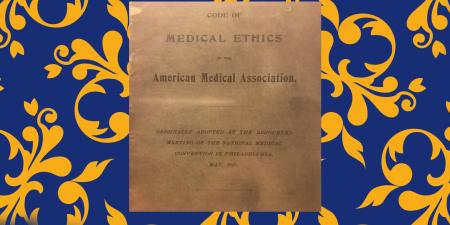We read “Who Pays? Mandated Insurance Coverage for Assisted Reproductive Technology” with great interest. While this article addresses many relevant issues, clarification of certain points is warranted.
One of the authors’ primary arguments against mandated insurance coverage for in vitro fertilization (IVF) is the “low success rate.” As evidence, they cite a per-cycle implantation rate (IR) of 4-36 percent. Implantation rate is defined as the number of fetuses with cardiac activity found on ultrasound divided by the number of embryos transferred. Although IR is used in research, it is considered a surrogate outcome and not typically clinically relevant [1-4]. For example, a patient who receives one embryo and miscarries at 10 weeks, after cardiac activity has been detected, has an IR of 100 percent, while a patient who receives three embryos and has only one identifiable pregnancy on ultrasound has an IR of 33 percent, even if she subsequently delivers a live infant. Therefore, IR does not truly reflect IVF “success.”
The authors subsequently reference data from the 2011 Society for Assisted Reproductive Technology (SART) registry, which reports live birth rates of 4-40 percent per cycle. The use of this data to support the authors’ claim of “low success rates” is problematic for several reasons. First, the live birth rates published by SART are age-specific. The 4 percent live birth rate per cycle cited by the authors is applicable to women over age 42, comprising only 6 percent of all cycles performed in the United States (US). In reality, more than half of autologous IVF cycles reported to SART are performed in women younger than 38, a group with a live birth rate of 30-40 percent per cycle [5]. Second, cumulative live birth rates, although not reported by SART, are more clinically relevant than per-cycle data. Studies have demonstrated a cumulative live birth rate for young women exceeding 80 percent after three IVF cycles, effectively surpassing rates achieved through natural fecundity [6-9].
Clarification is also needed regarding the advantages and disadvantages of adoption and assisted reproductive technology (ART). The authors fail to highlight the various treatment options available to the infertile couple and, in fact, make no mention of donor-oocyte therapy. This is especially troublesome since patients considering IVF with donor oocytes are frequently the same women contemplating adoption. The lack of comment on this group is especially conspicuous during the authors’ endorsement of adoption over IVF, when they claim that adoption “boasts a ‘success’ rate much higher” than an IVF cycle and is “more accessible and affordable than ART.”
These claims are inaccurate. First, patients who receive donor oocytes experience relatively high success rates. Donor-oocyte IVF cycles are associated with a live birth rate of 55 percent per fresh embryo transfer, with cumulative live birth rates as high as 85 percent [5-7, 10]. Next, oocyte donation may offer a faster path to parenthood than the 9- to 18-month waiting period advertised by some US adoption agencies, since patients with access to frozen donor oocytes can initiate IVF and achieve pregnancy within a few weeks [11, 12].
Also, the authors do not provide any data to support their claim that adoption is “more affordable” than IVF. In fact, adoption is incredibly expensive. The average cost of a domestic newborn adoption through an agency in the US is nearly $40,000, and international adoptions can be far more costly [13-16]. While we agree that IVF is also expensive, we feel that the authors’ failure to disclose the high cost of adoption is misleading. Furthermore, the authors did not consider the fact that IVF provides the opportunity for embryo cryopreservation and additional children. Patients with excess cryopreserved embryos after conceiving with IVF have the opportunity to have a second or even third child in the future at a substantially lower cost.
Finally, during their objection regarding the expense of mandated coverage, the authors claim that “arguments about cost effectiveness remain unconvincing” and “more stringent enforcement of ASRM guidelines [limiting the number of embryos transferred] could prove just as effective.” Here, there is no mention of costs generated by non-ART treatments. Too often, patients who cannot afford IVF are treated with controlled ovarian hyperstimulation with intrauterine insemination (COH-IUI) because it is cheaper on a per-cycle basis [17]. Although the number of COH-IUI cycles performed in the US is unknown, estimates suggest that these cycles produce four times more births than IVF, or about 4.6 percent of newborns [18]. Each cycle of COH-IUI carries a 25-30 percent multiple pregnancy rate and a 7-11.6 percent triplet-and-higher-order-multiple (HOM) pregnancy rate [19]. A recent publication from the CDC estimated that non-IVF fertility treatments such as COH-IUI were responsible for 45 percent of HOM births in the US in 2011, compared to 32 percent for IVF [20]. Finally, expedited treatment with IVF rather than COH-IUI is associated with a shorter time to pregnancy and lower cost per delivery [17]. Improving access to IVF could, therefore, theoretically limit the number of COH-IUI cycles performed, improve the cost-effectiveness of treatment, and reduce the substantial costs associated with HOM pregnancies.
Determining what “a reasonably just state should offer” is the fundamental basis of any discussion regarding medical resource allocation, but the authors’ misinformed use of certain facts and lack of comment on key areas led them to oversimplify the discussion on both sides. The decision for a society to support a citizen’s right to reproduce is a complex one, and both perspectives have valid and substantial evidence to support their arguments. While we applaud Falloon and Rosoff for raising this issue in a public forum, we encourage readers to recognize that the discussion has already been carried far beyond what was presented in their article.
References
- Shapiro BS, Daneshmand ST, Garner FC, Aguirre M, Hudson C, Thomas S. Evidence of impaired endometrial receptivity after ovarian stimulation for in vitro fertilization: a prospective randomized trial comparing fresh and frozen-thawed embryo transfer in normal responders. Fertil Steril. 2011;96(2):344-348.
- Lin M-H, Wu FS, Lee RK, Li SH, Lin SY, Hwu YM. Dual trigger with combination of gonadotropin-releasing hormone agonist and human chorionic gonadotropin significantly improves the live-birth rate for normal responders in GnRH-antagonist cycles. Fertil Steril. 2013;100(5):1296-1302.
- Jungheim ES, Schon SB, Schulte MB, DeUgarte DA, Fowler SA, Tuuli MG. IVF outcomes in obese donor oocyte recipients: a systematic review and meta-analysis. Hum Reprod Oxf Engl. 2013;28(10):2720-2727.
-
Practice Committee of American Society for Reproductive Medicine. Interpretation of clinical trial results. Fertil Steril. 2008;90(5 Suppl):S114-S120.
-
Society for Assisted Reproductive Technologies. Clinic summary report: all member clinics: 2011. https://www.sartcorsonline.com/rptCSR_PublicMultYear.aspx?ClinicPKID=0. Accessed February 19, 2014.
- Luke B, Brown MB, Wantman E, et al. Cumulative birth rates with linked assisted reproductive technology cycles. N Engl J Med. 2012;366(26):2483-2491.
- Stern JE, Brown MB, Luke B, et al. Calculating cumulative live-birth rates from linked cycles of assisted reproductive technology (ART): data from the Massachusetts SART CORS. Fertil Steril. 2010;94(4):1334-1340.
-
Glujovsky D, Blake D, Farquhar C, Bardach A. Cleavage stage versus blastocyst stage embryo transfer in assisted reproductive technology. Cochrane Database Syst Rev. 2012;7:CD002118.
- Guttmacher AF. Factors affecting normal expectancy of conception. JAMA. 1956;161(9):855-860.
- Toner JP, Grainger DA, Frazier LM. Clinical outcomes among recipients of donated eggs: an analysis of the U.S. national experience, 1996-1998. Fertil Steril. 2002;78(5):1038-1045.
-
Independent Adoption Center. Open adoption statistics. http://www.adoptionhelp.org/open-adoption/statistics. Accessed February 23, 2014.
-
Adoptive Families. Timing of adoption update: 2012-2013. http://www.adoptivefamilies.com/articles/1133/domestic-international-foster-adoption-timelines-2012-2013. Accessed February 24, 2014.
-
Adoptive Families. Cost of adoption update: 2012-2013. http://www.adoptivefamilies.com/articles/585/domestic-international-foster-adoption-expenses-2012-2013. Accessed February 23, 2014.
-
US Department of Health and Human Services. Child welfare information gateway: costs of adopting. https://www.childwelfare.gov/pubs/s_cost/s_costs.pdf. Accessed February 23, 2014.
-
Independent Adoption Center. IAC adoption fees (in-state). http://www.adoptionhelp.org/adoption-fees-in. Accessed February 28, 2014.
-
Independent Adoption Center. IAC adoption fees (out-of-state). http://www.adoptionhelp.org/adoption-fees-out. Accessed February 28, 2014.
- Reindollar RH, Regan MM, Neumann PJ, et al. A randomized clinical trial to evaluate optimal treatment for unexplained infertility: the fast track and standard treatment (FASTT) trial. Fertil Steril. 2010;94(3):888-899.
- Schieve LA, Devine O, Boyle CA, Petrini JR, Warner L. Estimation of the contribution of non-assisted reproductive technology ovulation stimulation fertility treatments to US singleton and multiple births. Am J Epidemiol. 2009;170(11):1396-1407.
- Ory SJ. The national epidemic of multiple pregnancy and the contribution of assisted reproductive technology. Fertil Steril. 2013;100(4):929-930.
- Kulkarni AD, Jamieson DJ, Jones HW Jr, et al. Fertility treatments and multiple births in the United States. N Engl J Med. 2013;369(23):2218-2225.



